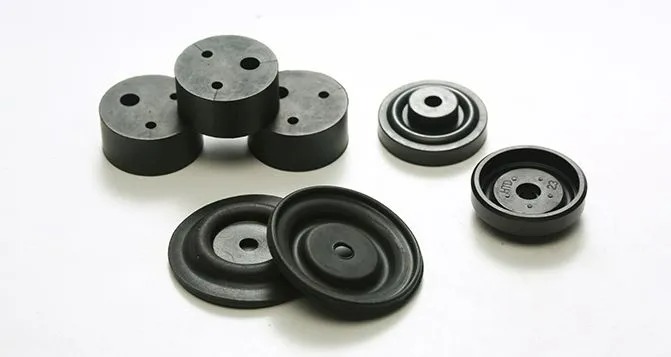1. What is rubber aging?
During the processing, storage and use of rubber and its products, the physical and chemical properties and mechanical properties of rubber gradually deteriorate due to the combined effects of internal and external factors, and finally lose their use value. This change is called rubber aging. The surface appears to be cracked, sticky, hardened, softened, powdered, discolored, moldy, etc.
2. What are the factors that cause rubber aging?
1. Oxygen: Oxygen reacts with rubber molecules in the rubber by free radical chain reactions, and the molecular chains break or are over-cross-linked, causing changes in rubber properties. Oxidation is one of the important causes of rubber aging.
2. Ozone: The chemical activity of ozone is much higher than that of oxygen, and it is more destructive. It also breaks the molecular chain, but the effect of ozone on rubber varies depending on whether the rubber is deformed or not. When used on deformed rubber (mainly unsaturated rubber), cracks appear perpendicular to the direction of stress, which are so-called "ozone cracks"; when used on deformed rubber, only an oxide film is formed on the surface without cracking.
3. Heat: Increasing the temperature can cause thermal cracking or thermal cross-linking of rubber. But the basic function of heat is activation. Increase the oxygen diffusion rate and activate the oxidation reaction, thereby accelerating the rubber oxidation reaction rate. This is a common aging phenomenon - thermal oxygen aging.
4. Light: The shorter the light wave, the greater the energy. It is ultraviolet rays with higher energy that cause damage to rubber. In addition to directly causing the breakage and cross-linking of rubber molecular chains, ultraviolet rays also produce free radicals due to the absorption of light energy, initiating and accelerating the oxidation chain reaction process. Ultraviolet light acts as a heating agent. Another characteristic of light action (different from heat action) is that it mainly develops on the surface of rubber. Samples with high glue content will have network cracks on both sides, which are so-called "light outer cracks".
5. Mechanical stress: Under the repeated action of mechanical stress, the rubber molecular chain will break to generate free radicals, triggering an oxidative chain reaction and forming a mechanochemical process. Mechanical breaking of molecular chains and mechanical activation of oxidation processes. Which one has the upper hand depends on the conditions. In addition, ozone cracking is easily caused under stress.
6. Moisture: The role of moisture has two aspects: rubber is easily damaged when exposed to rain in humid air or soaked in water. This is because the water-soluble substances and water groups in the rubber are extracted and dissolved by water. Caused by hydrolysis or absorption. Especially under the alternating action of water immersion and atmospheric exposure, the damage of rubber will be accelerated. However, under certain circumstances, moisture has no damaging effect on rubber and may even delay aging.
7. Others: Factors that affect rubber include chemical media, variable-price metal ions, high-energy radiation, electricity and biology, etc.

3. What categories can rubber aging test methods be divided into?
1. Natural aging test method. It is further divided into atmospheric aging test, atmospheric accelerated aging test, natural storage aging test, natural medium (including buried ground, etc.) and biological aging test, etc.
2. Artificially accelerated aging test method. For thermal aging, ozone aging, photo aging, artificial climate aging, photo-ozone aging, biological aging, high-energy radiation and electrical aging, and chemical media aging, etc.
